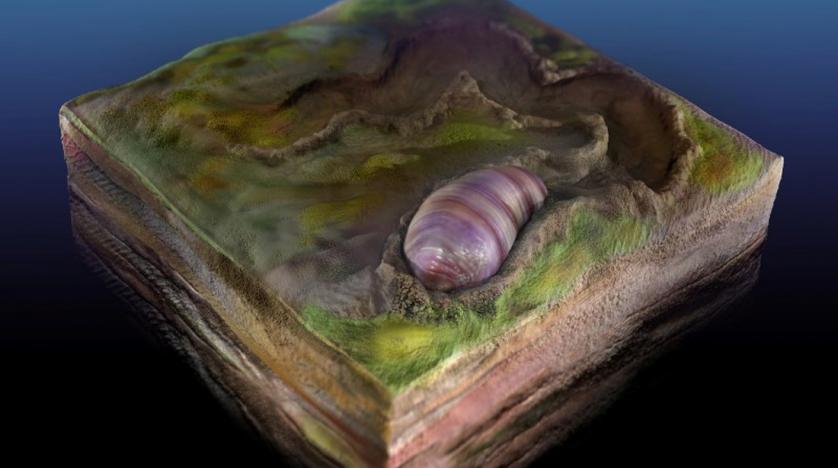Geologists Discover 555 Million-Year-Old Rice-Like Creature

Asharq Al-Awsat
A team of geologists from the University of California have discovered a rice-like organism with a front and back, two symmetrical sides, and openings at either end connected by a gut.
Organisms such as sponges and algal mats are known as the earliest multicellular creatures, but they lack basic features of most animals, such as a mouth or gut. However, the new discovery known as "Ikaria wariootia" has those features.
For 15 years, scientists agreed that fossilized burrows found in 555 million-year-old deposits in Nilpena, South Australia, belong to creatures that had two symmetrical sides. But there was no sign of the creature that made the burrows.
According to the study, which was published in the Proceedings of the National Academy of Sciences journal, the researchers noticed oval impressions near some of these burrows.
With funding from a NASA exobiology grant, they used a three-dimensional laser scanner that revealed the regular, consistent shape of a cylindrical body with a distinct head and tail and faintly grooved musculature. The animals ranged between 2-7 millimeters long and about 1-2.5 millimeters wide, with the largest has the size and shape of a grain of rice- just the right size to have made the burrows.
In a report published on the University's website, Mary Droser, a professor of geology, said: "We thought these animals should have existed 500 million years ago, but always understood they would be difficult to recognize. Once we had the 3D scans, we knew that we had made an important discovery."
"In spite of its relatively simple shape, Ikaria was complex compared to other fossils from this period. It burrowed in thin layers of well-oxygenated sand on the ocean floor in search of organic matter, indicating rudimentary sensory abilities," she added.
The burrows also preserve crosswise, "V"-shaped ridges, suggesting this organism moved by contracting muscles across its body like a worm, known as peristaltic locomotion. Evidence of sediment displacement in the burrows and signs the organism fed on buried organic matter reveal Ikaria probably had a mouth, anus, and gut, explained Droser.
Latest News
 Prosecution lays out ‘criminal conspiracy’ in historic Trump trial
Prosecution lays out ‘criminal conspiracy’ in historic Trump trial King from Madaba: Jordan has always proven its ability to move forward with persistence of Jordanians
King from Madaba: Jordan has always proven its ability to move forward with persistence of Jordanians Safadi discusses war on Gaza with French, German delegations
Safadi discusses war on Gaza with French, German delegations Erdogan arrives in Baghdad for first official visit since 2011
Erdogan arrives in Baghdad for first official visit since 2011 “Israeli” army says it approved plans for “continuation of war in Gaza”
“Israeli” army says it approved plans for “continuation of war in Gaza”
Most Read Articles
- Safadi discusses support to Syrian refugee with DRC
- King, Kuwait emir reaffirm pride in deep-rooted relations
- Israeli Occupation aggression on Gaza enters 200th day
- Kuwait channels $24 billion in development assistance to Jordan in 24 years
- UNRWA’s role in Gaza indispensable — Foreign Ministry
- Jordan condemns Israeli 'war crimes' in Gaza, calls for accountability
- King orders holding parliamentary elections in accordance with law, checks on electoral commission’s preparations
- Jordan outperforms MENA average in women, business, law indicators — report
- General Motors lifts 2024 profit forecast after strong Q1
- The ideological coup: How disciples of Kahane became the new face of Israel - By Ramzy Baroud, The Jordan Times